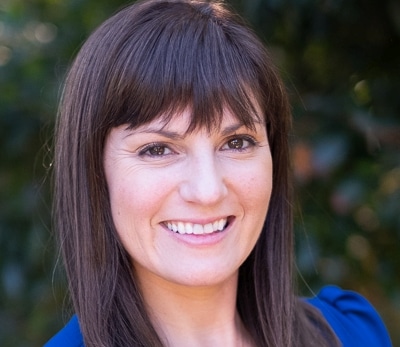A few years ago I learned that non-profit organizations MUST have a Scientific or Medical Advisory Board in order to be listed on NIH’s website as an informational resource for patients. Likewise, many foundation grants require a non-profit to have a similar board.
The intent behind these rules seems logical: to ensure that health-related organizations are putting out information based on established research and medicine.
At the time, as the President & CEO of Project Sleep, a non-profit organization dedicated to raising awareness about sleep, I consulted regularly with leading sleep researchers and clinicians, but just hadn’t formalized those relationships into an official Advisory Board. As a small non-profit, prioritizing our workload carefully is paramount. Creating this board felt daunting and a bit performative, but still, I knew we’d get to it when we had the capacity.
A year ago, an amazing sleep apnea advocate and podcaster, Emma Cooksey joined Project Sleep’s Board of Directors with the kind of enthusiasm that makes anything seem possible. With Emma’s leadership and dedication, we decided to embark on creating our Scientific and Medical Advisory Board. We started down the path of following the status quo of what we’d seen other non-profits do. Many organizations have a “Scientific and Medical Advisory Board,” and some have a separate “Patient Advisory Board.”
But something didn’t sit right with me. As an “e-patient” with Stanford Medicine X and a lifetime member of the Society for Participatory Medicine, my eyes had been opened to a model of thinking of patient advocates (both patients and caregivers) as equals working alongside scientists and clinicians to advance progress together. Since 2015, I’ve been advocating for patient advocates to be included at scientific and medical conferences as speakers and attendees and involved in research projects meaningfully from beginning to end.
Dr. Oliver Sacks said it best in Awakenings:
“One must cease to regard all patients as replicas, and honor each one with individual reactions and propensities; and, in this way, with the patient as one’s equal, one’s co-explorer, not one’s puppet, one may find therapeutic ways which are better than other ways, tactics which can be modified as occasion requires.”
So we created an “Expert Advisory Board” to break down silos by bringing a powerful group of clinicians, researchers, patients, and advocates all together onto ONE panel. We chose the word “expert” because we believe that real-life lived experience offers an important and different form of expertise than possessed by clinicians and scientists.
As we brainstormed who to invite onto the inaugural board, we aimed to include as many diverse backgrounds and perspectives as possible. Between Emma and myself, and with input from Project Sleep’s Board of Directors, we quickly created a long list of potential members. Our invitation to potential members highlighted that patient advocates would be included as equals alongside clinicians and researchers. We received overwhelmingly positive responses and quickly had 30 amazing advisors. A few individuals declined the opportunity due to limited capacity, but as far as I know, no one declined because of patient inclusion. It’s likely that the individuals we identified for this board were already aware of or aligned with Project Sleep’s efforts to elevate patients’ voices.
Another important goal, informed especially by Emma’s experience as a leading sleep apnea advocate, was to also break down silos between professional groups. In the sleep apnea space, there are medical, dental, and surgical treatment options that are all now FDA-approved. Yet, lack of collaboration between these different clinical disciplines can result in patients having to seek out information about all the viable treatment options themselves in order to make more informed decisions. So our board proudly includes different clinical experts from pulmonologists to neurologists, from dentists to psychologists, to foster more conversation and collaboration. This is the power of a patient-led effort designed to align with patient-centered priorities.
After months of email correspondence conducted by Emma, we hosted our first set of Expert Advisory Board meetings in November 2022. We offered two different time options to hopefully accommodate as many different schedules and time zones as possible. Between the two meeting options, almost the full 30-person board attended and the discussion was lively.
We’d scheduled the meetings for 90 minutes each, and in one meeting, the group stayed on longer to keep the discussion going. I can’t recall many other zoom meetings in 2022 where a large group stayed on for almost two hours. Yet, the spirited conversation bounced quickly between clinicians, researchers, and patients, in no particular order, with everyone listening respectfully and building on each other’s comments. For me, I heard what everyone was saying, but I also heard this discussion on another wavelength–it was like listening to a new and beautiful song for the first time, with unique combinations of sounds and verses strung together into a perfect melody. We’d provided the different notes, but the group composed the beautiful song.
We believe that including individuals with first-hand lived experiences will foster more fruitful discussions, allow everyone to learn from each others’ diverse expertise, and advance better outcomes faster.
Julie Flygare, JD, is President and CEO of Project Sleep. She is the award-winning author of Wide Awake and Dreaming: A Memoir of Narcolepsy.
Would you like to see more articles like this? Please consider supporting the Society by joining here: https://participatorymedicine.org/memberships/. Thank you!







Recent Comments